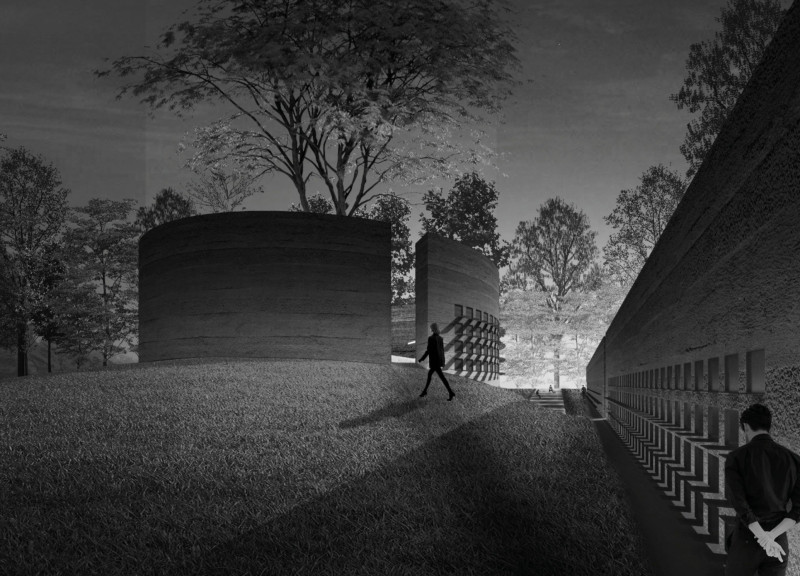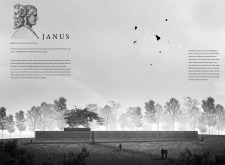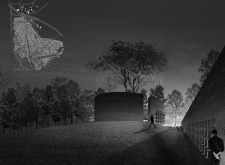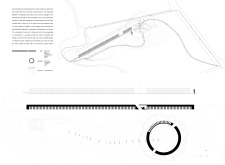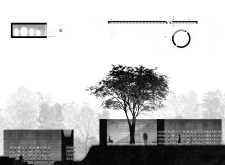5 key facts about this project
The memorial's primary function is to facilitate personal contemplation and communal reflection on loss and the cycle of life. The design integrates pathways that guide visitors through various experiences, creating a narrative that resonates with the emotional weight of remembrance. The incorporation of natural landscapes in conjunction with architectural elements establishes an environment that encourages introspection and engagement with both the space and its purpose.
The architectural layout features a central passage that culminates in a wall that divides two contrasting surfaces. One side conveys a polished finish, representing life, while the other side has a rough texture, symbolizing death. A significant detail of the project is the central tree, which acts as a focal point, representing continuity amid the architectural forms. This tree not only enhances the aesthetic appeal but serves as a natural marker within the memorial's design.
Unique design approaches in the Janus Memorial include the emphasis on duality as a theme throughout the architecture. This duality is illustrated in the use of materials such as concrete for permanence and glass to allow natural light, symbolizing transparency and hope amid sorrow. The interplay of light and shadow within the space enhances the emotional experience, guiding visitors through feelings of solitude and community.
Additionally, the project is sensitively rooted in the cultural context of Latvia, reflecting the traditions associated with remembrance within the region. This aspect of the design ensures that the memorial honors local practices and historical narratives, making it more than just a physical structure.
The integration of pathways and diverse experiences encourages visitors to engage with the project on multiple levels, allowing for personal reflections on their individual connections to loss. Architectural details such as benches made from warm wood contrast with harsher materials, providing spaces for gathering and solitude.
For those interested in the Janus Memorial, exploring detailed architectural plans, sections, and designs will provide further insights into the thoughtful consideration of each element within the project. The combination of reflective spaces, materiality, and cultural sensitivity underscores the significance of the memorial as a place for understanding and honoring the complexities of life and death.


